For nearly three centuries, Maison Ruinart has been committed to providing an authentic, essential and responsible vision of art de vivre.
In 2020, Ruinart broke with the tradition of individual gift boxes, and now pushes its global, environmental approach further with the second skin case. This eco-designed packaging perfectly marries the emblematic silhouette of the Maison’s signature bottle with Ruinart’s taste integrity, which is preserved until tasting.
With the revolutionary redesign of the packaging, Ruinart is demonstrating its innovative spirit for sustainability: where yesterday a legally required box made sense, today a completely recyclable casing made from 100% cellulose fibres is lighter than ever before. As a sustainable innovation, the Second Skin packaging represents a return to nature: it aims to reduce waste without denaturing experience or taste.
As a direct homage to the Crayères, the minimalist paper case has a soft handle and a silky yet textured surface that is reminiscent of the Maison’s historic cellars in Reims. “Innovative, authentic and environmentally conscious, the second skin case demonstrates our commitment to sustainability.” Frédéric Dufour, President, Maison Ruinart
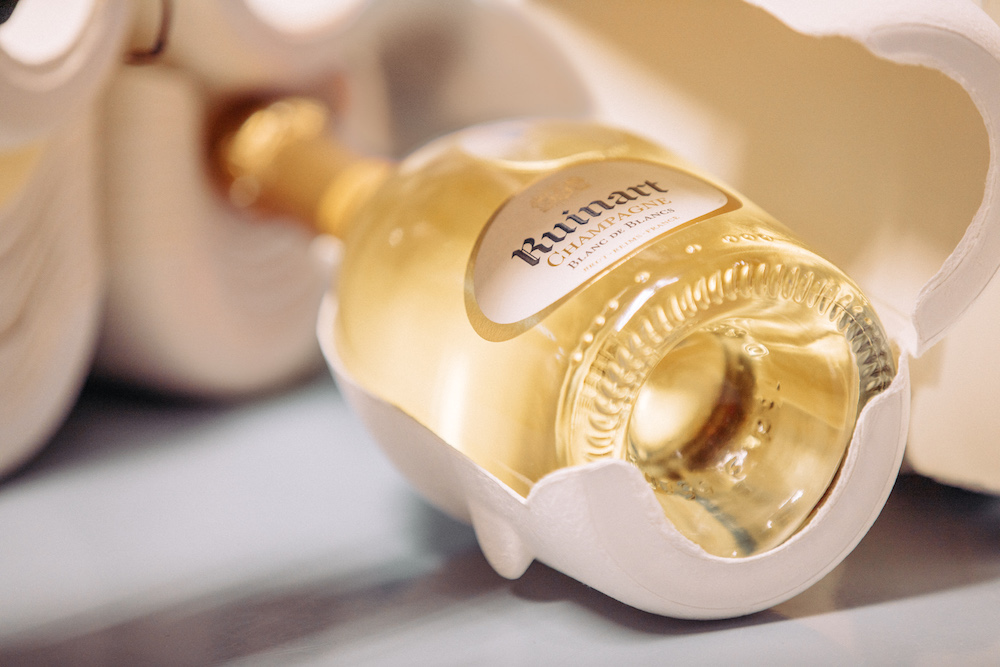
Maison Ruinart: a pioneer by nature
On September 1, 1729, Nicolas Ruinart drafted the founding dee of Maison Ruinart in Reims, located in the heart of Champagne, which became the first champagne house in history. In 1764 Maison Ruinart was the first champagne house to offer a rosé champagne, then called “oeil de perdrix”, partridge’s eye. In the late 18th century, the Ruinart family acquired the Crayères in Reims, intuiting that these underground chalk quarries will provide ideal conditions for the maturation of their cuvées.
In 1896, the Maison commissioned, for the first time, an up and coming artist, Alphonse Mucha, who created a surprising advertising poster for Ruinart which was a great success. In 1947, the descendants of the Ruinart family have made a courageous decision to focus their full attention on Chardonnay, the most precious and rarest grape variety in Champagne. At the turn of the century, in 1997, Ruinart returned to the generous forms – all curves – of its heritage bottles, developed during the Age of Enlightenment. In 2020, after more than 2 years of research and development, Maison Ruinart unveils the second skin case: a disruptive, eco-designed packaging.
Ruinart has turned sustainable development into a source of innovation: a driving force for creativity. Since 1729, the Maison has evolved with the times, anticipating paradigm changes and instilling a new art de vivre.
Ruinart Second Skin in Numbers: 2 years of research and development, 7 prototypes before arriving at the final version, 9 times lighter than the previous generation of gift boxes, 60% reduction in the carbon footprint compared to the previous generation of gift boxes, with packaging produced according to the BEE (Bilan Environnemental des Emballages) and ADEME (Agence de l’environnement et de la maîtrise de l’énergie) methodology of paper issued from eco-managed European forests.
An unprecedented innovation in packaging, the second skin case highlights a disruptive yet environmentally responsible approach. It is the result of two years of dialogue between Maison Ruinart’s teams and its manufacturing partners, Pusterla 1880 and James Cropper. Together, they focused on pulped paper – that solved two technological challenges.
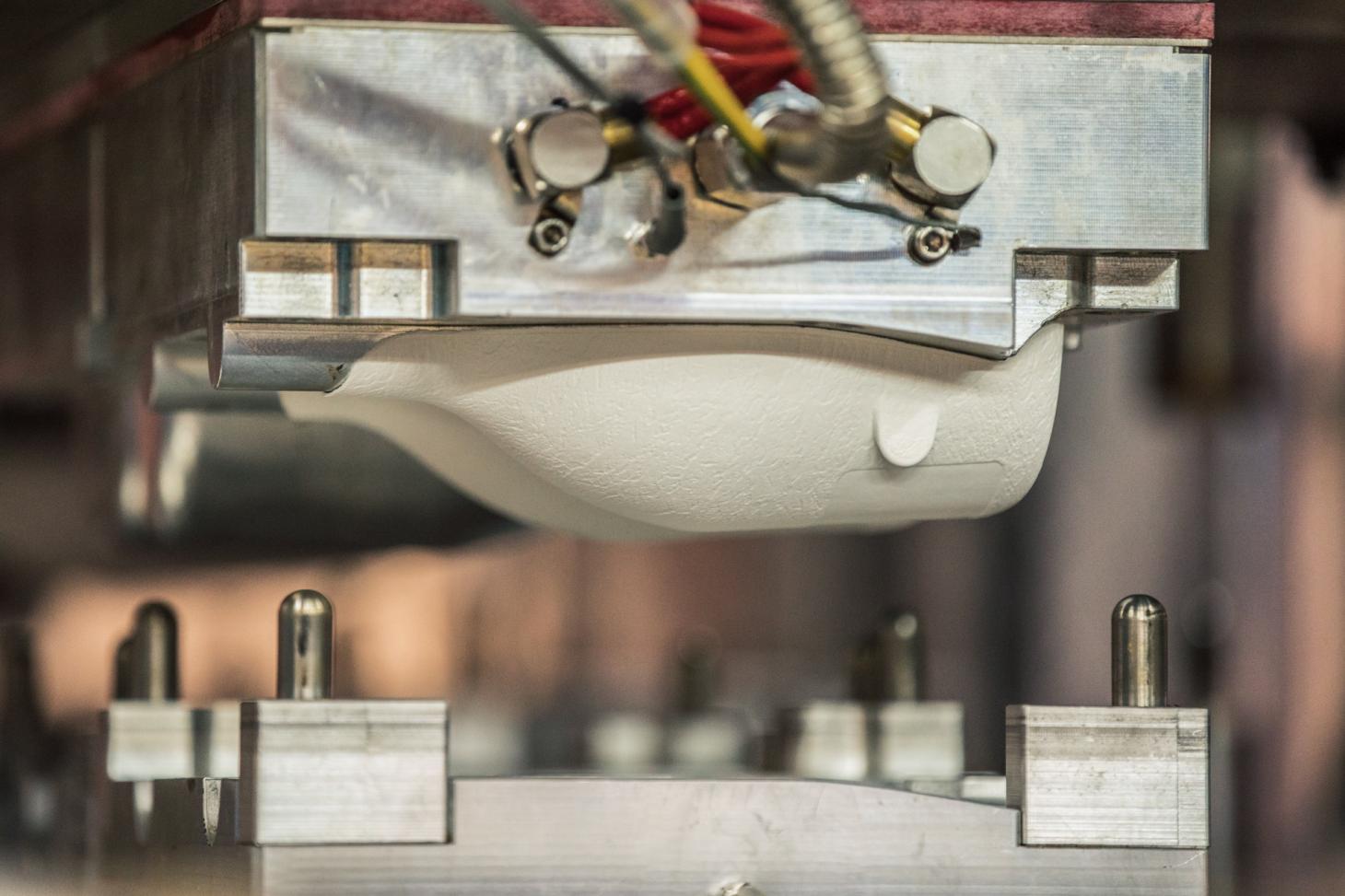
The first was to make the casing impermeable to light, that might alterate the champagne, especially with clear glass bottles. Paper alone was not a sufficient protection to filter out all light waves. Therefore, a new technique was developed to enrich the cellulose with a natural metallic oxide which reinforced the opacity by adding a protective layer.
The second challenge was to insure that the case could protect the champagne right up until tasting, while being resistant to service uses (including contact with water) without deteriorating. Adapted to refrigerated conservation, the case even maintains its integrity for several hours when stored in a bucket of ice. Ruinart perpetuates its definition of l’art de vivre through a new set of gestures.
Altogether, it took seven prototypes to arrive at this pulped paper case, which embellishes the contours of the bottle while preserving Ruinart’s taste integrity.
The design of the case reinterprets the elegant gestures of gastronomic establishments: it is inspired by the manner in which maîtres d’hôtels wrap a white serviette around bottles of champagne.
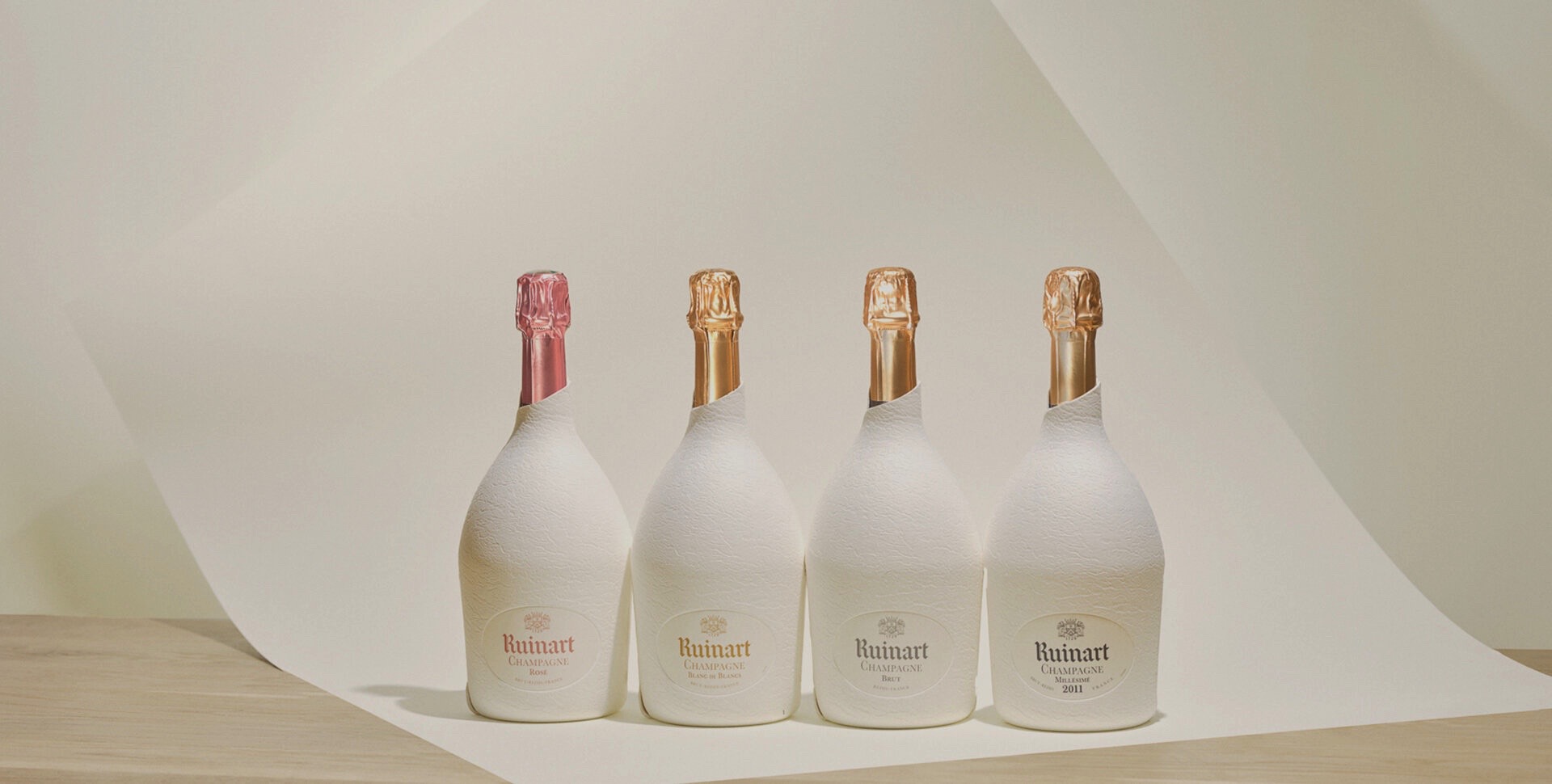
A holistic, global Approach
“We wanted to go as far as possible to lessen our environmental imprint, thus challenging finishings, aesthetic and uses.” Violaine Basse, Director of Marketing and Communication, Maison Ruinart
For 10 years, Ruinart has progressively implemented a global practice of eco-design: an in-house “Environmental Performance Index” (IPE) measures the impact of all projects, including packaging as service and visibility tools. Since 2015, the Maison has been innovating with the launch of a 50g lighter gift box that, at the time, saved more than 200 tons of paper. That same year, all forms of plastic wrapping were removed, eliminating some additional 26 tons. More widely, all packaging materials used are from France (87%) or Western Europe (12%). Cardboard packaging and wooden boxes – as well as the natural wood fibre used to make the second skin case – are all sourced in a sustainable manner (eco-managed forests, certified FSC or PEFC). The development of the second skin case is part of this global approach.
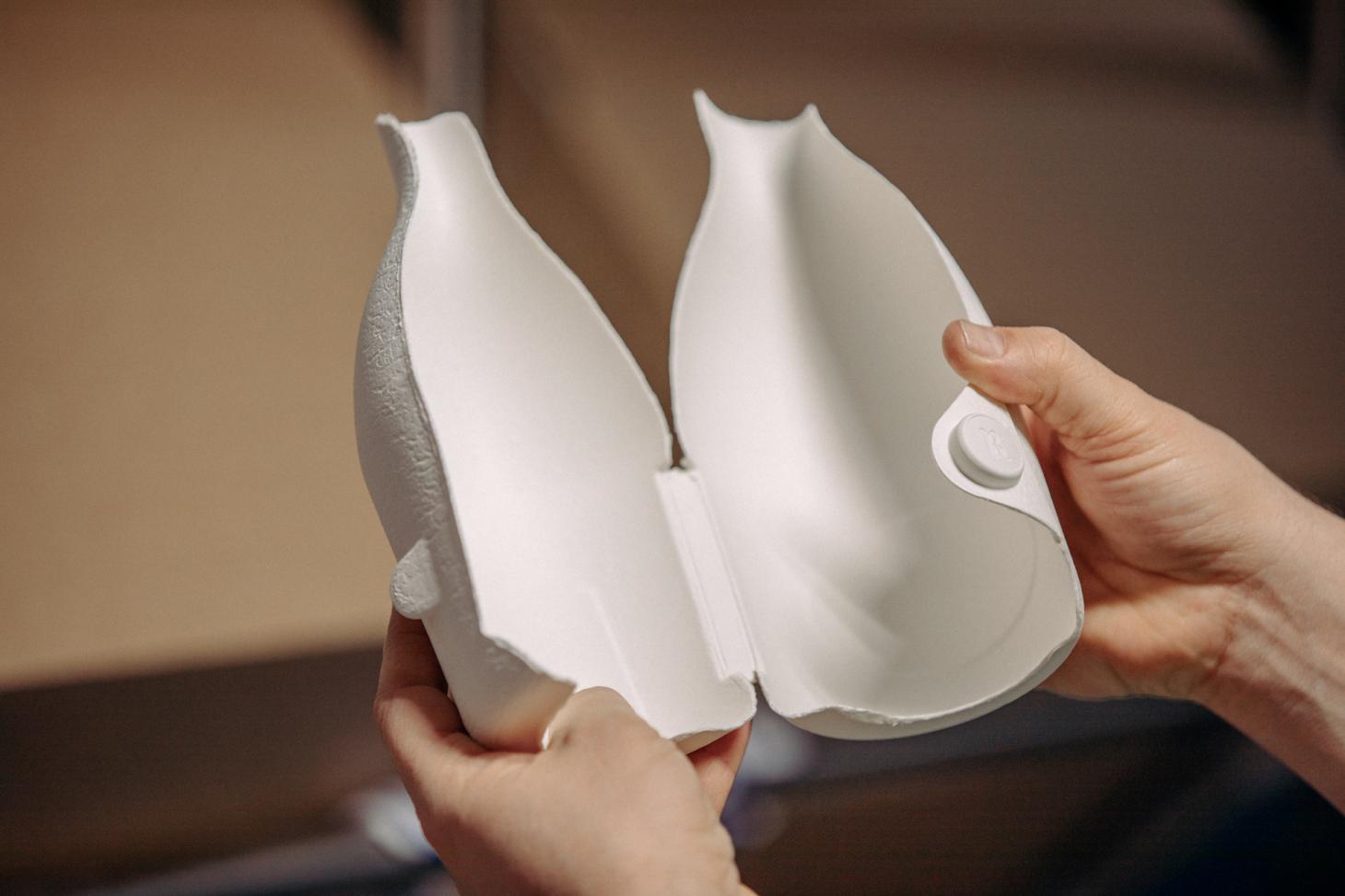
Committed to Nature, empowered by Technology
“The challenge was to imagine a unique packaging that reflects the spirit of Maison Ruinart, is recyclable and leaves no waste behind.” Phil Wild, President James Cropper and Philippe Commenges, Director of Development, Pusterla 1880
The second skin case was developed in an exceptional environment where testing and innovation abound. Manufacturer James Cropper was established in 1845, on the shores of the Lake District National Park between Scotland and England, where it developed a unique savoir-faire. The family business is specialized in paper, respectfully leading innovations amidst a landscape classified as a UNESCO World Heritage site. The water indispensable to the creation of the second skin case is drawn from the site, 91% of which is clean enough to be released back into the river after manufacture. Half of the remaining 9% evaporates during the drying process of the pulped paper, and the other half corresponds to the natural humidity present in the case.
At the start, the primary characteristics were determined thanks to digital modeling; thereafter, molds engraved with unique details were developed. These were then dipped in baths of a liquid cellulose mix, then pressed to bring the fibres together and form a three-dimensional white paper case. The result is obtained without the use of plastic or glue. As it seals up, the monobloc perfectly fits itself to the form of the bottle and is endowed with elegant finishings referential to the Ruinart heritage.
The case is assembled by hand in the unique terroir of Champagne: it covers each precious bottle like a second skin.
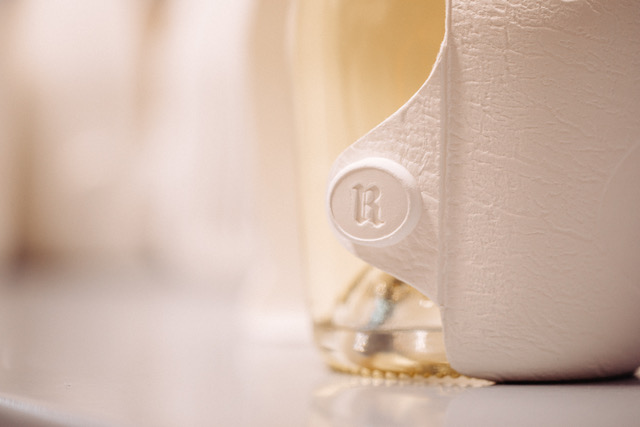
Ruinart Second Skin: Design Details
Imprinted with the Maison’s monogram, the paper’s closure system is at once discreet and intuitive. Its absence of edges and raw, sophisticated aesthetic are obtained through high-pressure water jet cutting. The paper is, to the touch, matte and silky; it protects the champagne from light and resists effects of dampness. The second skin case is moulded to the contours of the bottle in three dimensions, hugging its curves. This casing, finely engraved with detailing, evokes the textures of the Crayères in Reims.
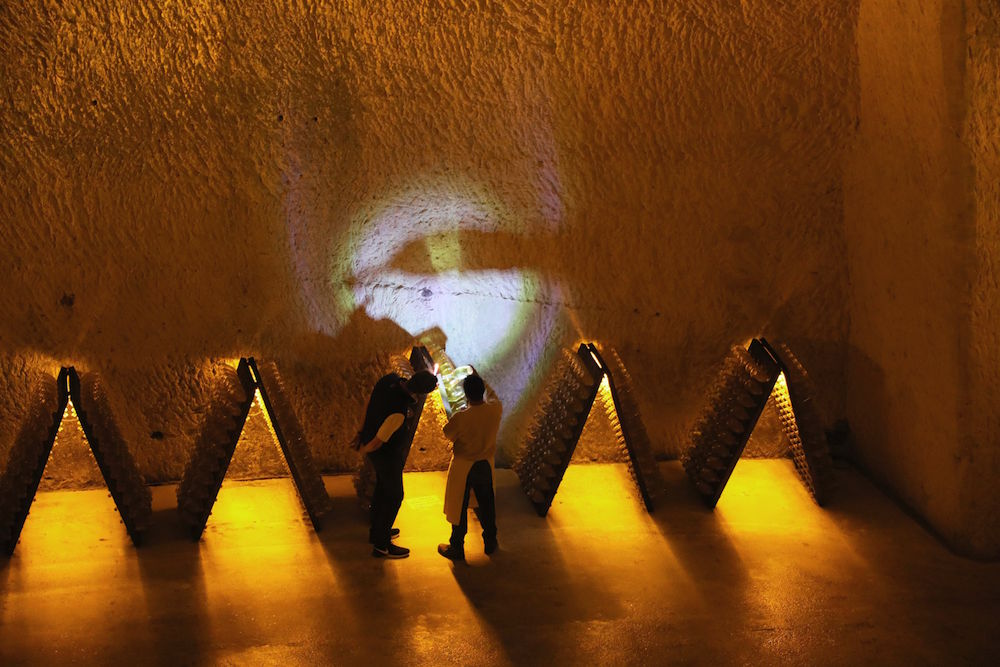
Maison Ruinart: Ahead of its time
“Climate change is already happening in the vineyards. The Champagne terroir is the source of our wines’ excellence: we have a responsibility to protect and preserve this natural environment.”, Frederic Panaiotis, Cellar Master, Maison Ruinart
For Ruinart, sustainability is a must: viticulture is an undertaking with a long-term view. Thanks to the assemblage of grape varieties, crus and vintages, the cellar master composes cuvées year after year. The process is long: from harvest to tasting, it sometimes takes over a decade.
Twenty years ago, the culture of the vineyard melded with the philosophy of sustainability. From the vineyards certified “Viticulture Durable en Champagne” (VDC) since the 1990s and “Haute Valeur Environnnemental” (HVE niveau 3) since 2014, to all wine production activities.
Ten years ago, Ruinart decided to extend this to every element of the metier. A global approach is essential: whether it is transport, packaging solutions or identifying committed artists for collaboration, every aspect is taken into account. On site at Maison Ruinart in Reims, 98.7% of all waste is recycled and all by-products of the vinification process are 100% recycled.
By dreaming up the Second Skin case, Ruinart offers a sustainable alternative to an entire industry and heightens consciousness. The Maison wishes to open up a dialogue with the wider public and help both industry behaviour and consumer behaviour evolve. To tackle these challenges, collective intelligence is vital.
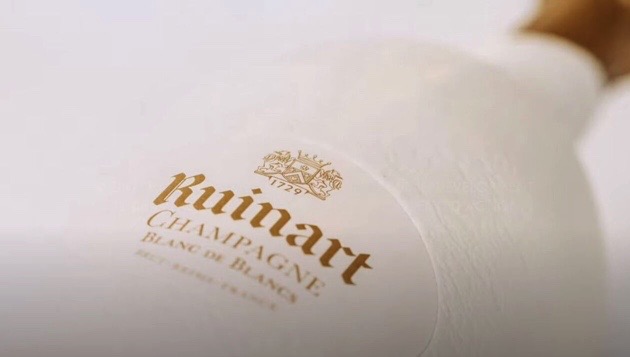
Epicurian Awareness
“Taking action for a sustainable future, we choose to collaborate with artists who are concerned with environmental issues.”, Frédéric Dufour, President, Maison Ruinart
Maison Ruinart extolls an updated epicurism that links people, terroirs and savoir-faire where good products, aesthetics and humanism are the pillars of an essential art de vivre. Such is Ruinart’s engagement with contemporary artists. Attentive to the issues of the time, the Maison supports both celebrated artists and emerging talents whose approach, be it more emphatically ecological, inventive, humanist or resilient, inaugurates a new creative era.
As early as 1896, Maison Ruinart was the first brand to commission an artist, Alphonse Mucha, to create an advertising poster for its wines. Over this past decade, the international artists selected to reinterpret the codes of the Maison are committed to environmental causes: like Dutch designer Piet Hein Eek (2013) who created pieces by using wooden scraps, Chinese artist Liu Bolin (2018) who championed the savoir-faire of local workers, or English artist David Shrigley (2020), whose gouaches highlight how much humans owe to nature.
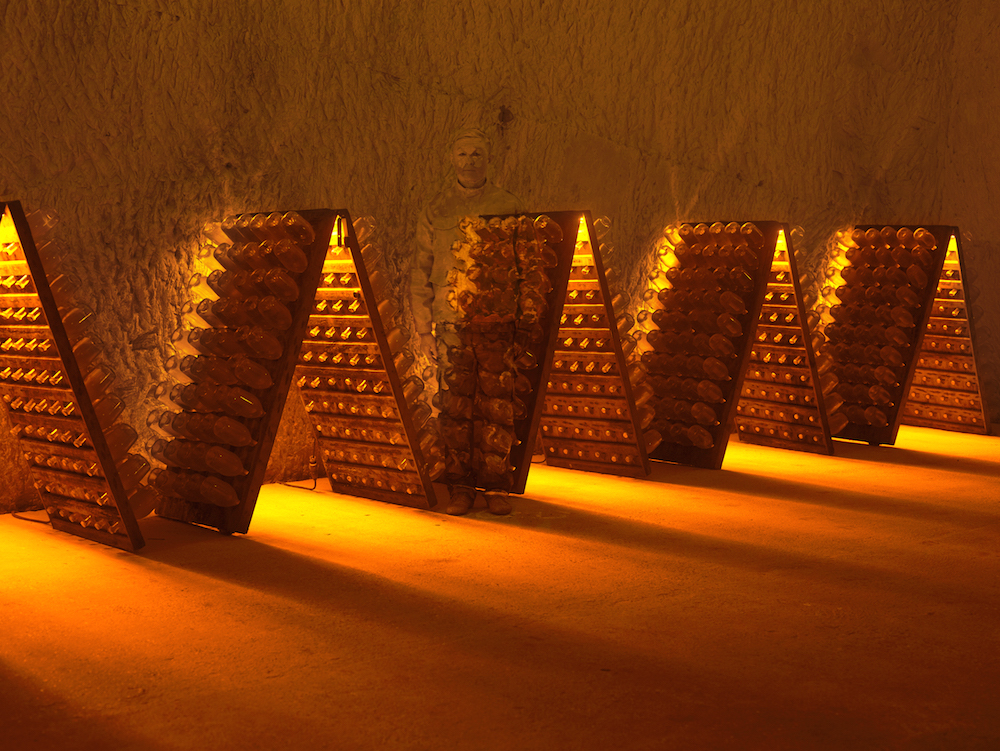
In Reims, the art installation Retour aux sources (2019), by the duo Mouawad Laurier, links innovation, creativity and sustainability, illustrating climate change in Champagne to viewers.
Highlighting emerging talents is a staple of the Maison. Ruinart has partnered with NEW INC, the artistic incubator of the New Museum in New York, while using Instagram for highly creative artistic curation. It also launched the Prix Maison Ruinart in 2018: each year, it offers an artistic residency to an emerging photographer in the heart of Champagne.
Today, Ruinart’s artistic efferversence includes thinking about the future and is especially atuned to sustainability.